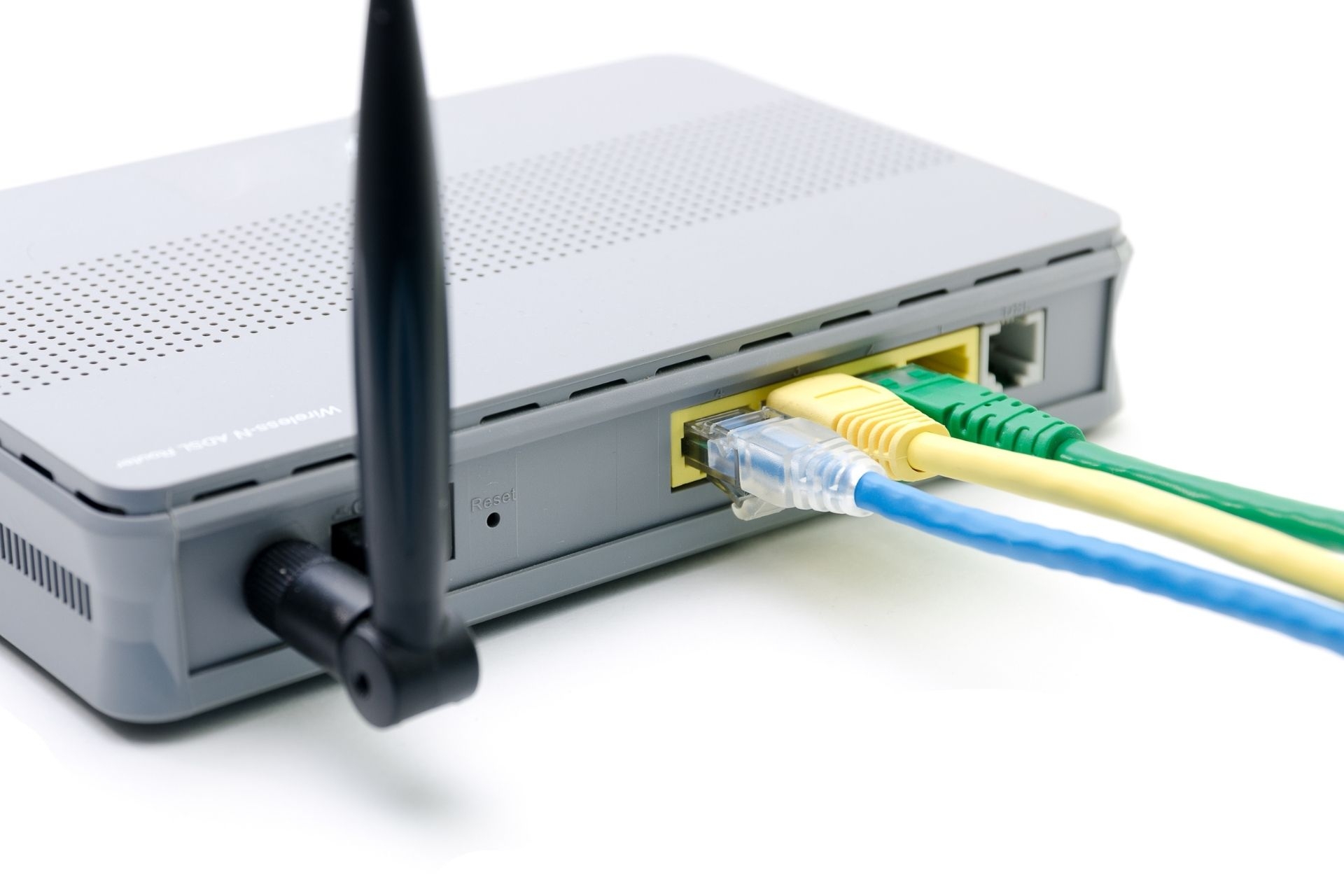

IPv6 addresses the issue of IPv4 address exhaustion by using a 128-bit address format, which provides a significantly larger pool of unique addresses compared to the 32-bit address format used in IPvThis expansion allows for trillions of unique addresses, ensuring that the world can continue to connect devices to the internet without running out of available addresses.
The key differences between IPv6 and IPv4 in terms of address format and length are significant. IPv4 uses a 32-bit address format, allowing for approximately 4.3 billion unique addresses. In contrast, IPv6 uses a 128-bit address format, providing for around 340 undecillion unique addresses. This massive increase in address space is essential for accommodating the growing number of internet-connected devices.
After another busy week last week, the team at Baltic Broadband got the White Stuff & their shiny new shop connected with high speed fibre internet at Liverpool One. Gigabit...

Posted by on 2024-03-05
LCRDC, Baltic Broadband’s new Data Centre brand – has today launched a new Micro data centre, located in the East of Liverpool, based in Edge Hill. Strategically located within the...
Posted by on 2024-03-01
Worried about a possible Fibre Cut? You should be. Though fibre is perceived as a “perfect” media, fibre is fragile and repairs take days or weeks requiring specialist skills and...
Posted by on 2024-02-27
LCRDC, Baltic Broadband’s new Data Centre brand – have today launched a new Micro Data centre located in Bootle, Sefton. Strategically located within South Sefton, this Micro Data Centre is...
Posted by on 2024-02-13
Many would have heard the recent news about the numerous redundancies within the Games Industry. Sadly, there are many more job losses to come, and this will affect many jobs...
Posted by on 2024-02-01
IPv6 supports improved security features compared to IPv4 through the implementation of IPsec (Internet Protocol Security) as a mandatory part of the protocol suite. IPsec provides authentication, encryption, and data integrity, enhancing the overall security of IPv6 communications. Additionally, IPv6 includes features such as built-in support for neighbor discovery and address autoconfiguration, which can help prevent certain types of attacks.

Organizations face several challenges when migrating from IPv4 to IPv6, including the need to update network infrastructure, ensure compatibility with existing systems, and train staff on the new protocol. Additionally, there may be compatibility issues with legacy applications that are not designed to work with IPvPlanning and executing a smooth transition to IPv6 require careful consideration and coordination to avoid disruptions to operations.
IPv6 handles Quality of Service (QoS) differently compared to IPv4 by incorporating flow labeling and traffic class fields in the header to prioritize packets based on their importance. This allows for more efficient traffic management and better support for real-time applications such as voice and video. IPv6's QoS capabilities help improve overall network performance and user experience.

The deployment of IPv6 has significant implications for Internet of Things (IoT) devices, as the vast address space provided by IPv6 allows for the seamless connection of a massive number of IoT devices. IPv6's built-in security features also help protect IoT devices from potential cyber threats, enhancing the overall security of IoT ecosystems. The adoption of IPv6 is crucial for the continued growth and development of IoT technologies.
IPv6 facilitates the growth of mobile networks and the transition to 5G technology by providing a scalable and efficient addressing scheme that can accommodate the increasing number of mobile devices and services. The larger address space of IPv6 allows for more efficient routing and network management, which is essential for supporting the high-speed and low-latency requirements of 5G networks. IPv6 plays a crucial role in enabling the full potential of 5G technology and driving innovation in mobile communications.

Fiber-optic internet connections typically have lower latency compared to satellite bulk internet connections. This is due to the fact that fiber-optic cables transmit data at the speed of light, resulting in faster response times and reduced lag. On the other hand, satellite internet connections involve data being transmitted to and from satellites in orbit, which can introduce delays in data transfer. These delays are often caused by the distance the data needs to travel and the time it takes for signals to reach the satellite and back. As a result, fiber-optic connections are generally preferred for applications that require low latency, such as online gaming, video conferencing, and real-time data processing.
The future of bulk internet is being shaped by a variety of emerging technologies, including fiber optics, 5G networks, edge computing, and software-defined networking (SDN). Fiber optics, with its ability to transmit data at high speeds over long distances, is revolutionizing the way data is transferred across the internet. 5G networks are enabling faster and more reliable connections, allowing for increased bandwidth and reduced latency. Edge computing is bringing processing power closer to the end user, reducing the need to send data back and forth to centralized servers. SDN is allowing for more efficient management of network resources, enabling greater flexibility and scalability. These technologies are working together to create a more robust and efficient bulk internet infrastructure for the future.
The implications of quantum computing on bulk internet encryption are significant and far-reaching. Quantum computers have the potential to break traditional encryption methods, such as RSA and ECC, by leveraging quantum algorithms like Shor's algorithm to factor large numbers quickly. This poses a threat to the security of sensitive data transmitted over the internet, including financial transactions, personal information, and government communications. As a result, there is a growing need for post-quantum cryptography solutions that can withstand attacks from quantum computers. Researchers are actively developing new encryption algorithms, such as lattice-based cryptography and code-based cryptography, to secure data in the quantum computing era. Additionally, organizations are advised to start transitioning to quantum-resistant encryption protocols to protect their data from potential quantum threats in the future.
The implications of blockchain technology for bulk internet transactions are significant. By utilizing a decentralized and secure ledger system, bulk internet transactions can be conducted with increased transparency, efficiency, and trust. Smart contracts can automate the process, reducing the need for intermediaries and streamlining the transaction process. Additionally, blockchain technology can provide a tamper-proof record of all transactions, ensuring data integrity and reducing the risk of fraud. This can lead to cost savings, faster transaction speeds, and improved overall security for bulk internet transactions. Overall, the adoption of blockchain technology in this context has the potential to revolutionize the way bulk internet transactions are conducted, offering a more reliable and efficient solution for businesses and consumers alike.
Bulk internet streaming services typically require high bandwidth to deliver high-quality video content to users. The bandwidth requirements can vary depending on the resolution of the video being streamed, with higher resolutions such as 4K requiring more bandwidth than standard definition or high definition. Additionally, factors such as the number of concurrent users, the complexity of the content being streamed, and the compression technology being used can also impact bandwidth requirements. To ensure a smooth streaming experience for users, streaming services often invest in robust network infrastructure and content delivery networks to handle the demands of large-scale video streaming. Overall, the bandwidth requirements for bulk internet streaming services are significant and must be carefully managed to provide a seamless viewing experience for users.
Bulk internet users typically have different bandwidth allocation compared to regular users. These users often require higher bandwidth to accommodate their heavy usage patterns, which may include activities such as streaming, downloading large files, or online gaming. Internet service providers may offer specialized plans for bulk users that prioritize consistent high-speed connections and lower latency. Bandwidth allocation for bulk users may also involve dedicated lines or network resources to ensure reliable and fast internet access. Additionally, these users may have access to advanced networking features such as Quality of Service (QoS) settings to prioritize certain types of traffic. Overall, the differences in bandwidth allocation for bulk internet users are tailored to meet their specific needs for high-performance internet connectivity.